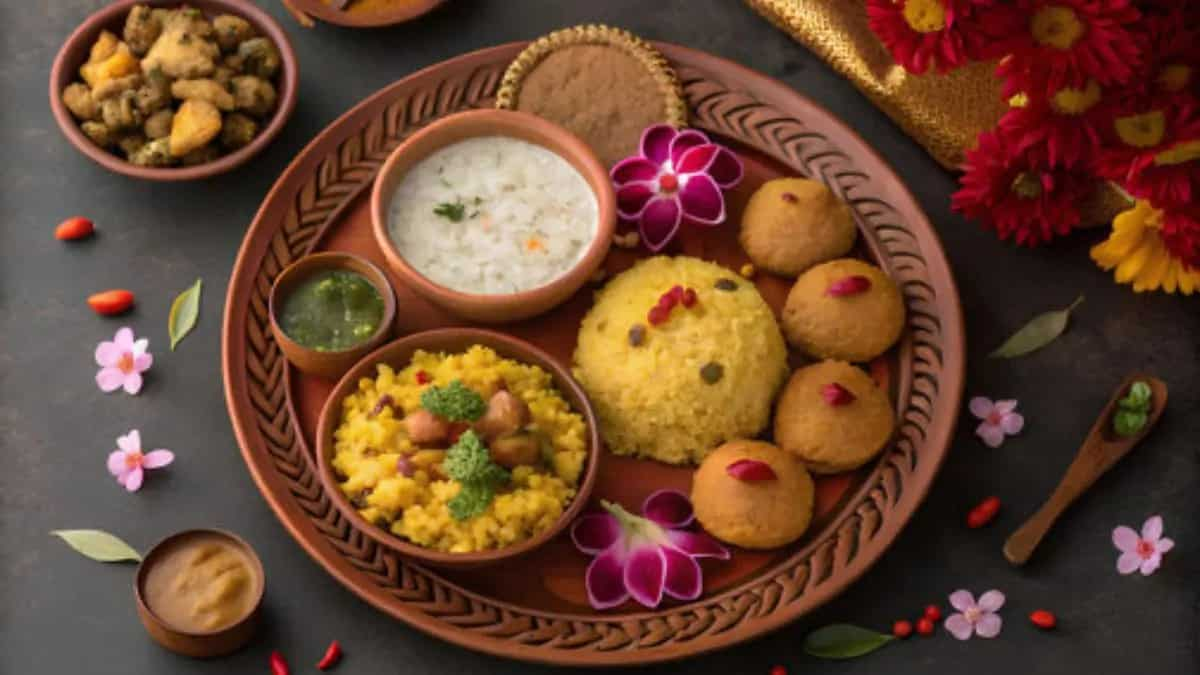
Today marks Dussehra, a festival that symbolises the victory of good over evil and is observed across India with devotion and community gatherings. While each region has its own rituals, the food prepared for Vijayadashami is one of the most enduring aspects of the celebration. Meals on this day are never casual; they are tied to blessings, thanksgiving, and remembrance of tradition. Families plan their menus carefully, drawing on local crops and age-old recipes that are believed to bring prosperity and wellbeing. The variety of dishes cooked today shows how each part of the country shapes the festival through its own tastes and ingredients, making Dussehra a shared yet diverse occasion.
Gujarat And Maharashtra
In Gujarat and Maharashtra, Vijayadashami begins with the sharing of faraal, which includes savoury snacks and sweets. One of the most iconic pairings in Gujarat is fafda with jalebi, which has become strongly associated with Dussehra morning. Fafda is a crisp chickpea flour preparation, while jalebi is made with fermented batter fried into spirals and soaked in syrup. Families in Maharashtra often prepare poha with jaggery and coconut or simple festive sweets such as shrikhand or puran poli. In many households, the practice of exchanging leaves of the Apta tree, also called sona, is linked with prosperity, and this exchange is often followed by a shared meal.
Karnataka And Tamil Nadu
In Karnataka and Tamil Nadu, the food associated with Vijayadashami is closely tied to the Navratri tradition of preparing sundal, which is a dish of tempered legumes such as chickpeas, cowpeas, or green gram. Sundal is prepared daily during Navratri and also offered on Vijayadashami as prasad. In Tamil homes, payasam made with rice, milk, and jaggery is prepared, along with vadai and pongal. In Karnataka, dishes such as obbattu or holige, a sweet flatbread filled with jaggery and dal, are made on the day. Families also prepare kosambari, a salad of soaked lentils and fresh vegetables, which symbolises freshness and new beginnings. These dishes are simple but significant, reflecting ideas of offering and gratitude.
West Bengal And Eastern India
In West Bengal, Vijayadashami is linked with the farewell of Goddess Durga after Durga Puja. The traditional meal on this day often includes rice, moong dal, fried vegetables, and a selection of fish or sweet preparations. Families prepare dishes such as khichuri with labra, a mixed vegetable curry, and follow it with sweets like sandesh or rasgulla. In Odisha, Vijayadashami prasad includes rice dishes cooked with ghee and lentils, along with sweets made from chhena. In Assam, preparations such as pitha or coconut-based sweets may be part of the festive table. These foods often carry the sense of closure to the Durga Puja celebrations and are linked with community feasts as well as family gatherings.
Northern India
In the northern states, Dussehra is often observed with large gatherings at Ram Leela grounds and community feasts. The food prepared at home is often vegetarian, in keeping with the Navratri practice of avoiding meat and onion. Families prepare puri, aloo sabzi, kheer, and halwa. In Uttar Pradesh and parts of Delhi, special attention is given to offering food as bhog before it is served. In Punjab and Haryana, festive meals may include kheer made with rice or wheat and preparations of seasonal vegetables. The food served reflects both religious practice and the seasonal produce available in October.
Andhra Pradesh And Telangana
In Andhra Pradesh and Telangana, Vijayadashami is celebrated with dishes that highlight local grains and sweets. Families prepare pulihora, which is tamarind rice seasoned with curry leaves and spices, and they also make bobbatlu, a stuffed sweet flatbread similar to puran poli. Payasam, prepared with jaggery, coconut milk, and rice, is another key dish. In some homes, bajra roti and curries made with gourds and pulses are included, linking the meals with local harvests. These foods are often shared with neighbours and relatives, keeping alive the community aspect of the festival.